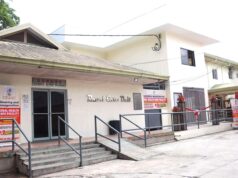SUBIC BAY FREEPORT – The number of Filipino-owned investment projects approved by the Subic Bay Metropolitan Authority (SBMA) edged out foreign direct investments (FDIs) in this freeport last year, although foreign firms still dominated in terms of committed investment value.
A total of 66 new projects proposed by local firms comprised fully 57 percent of the 115 newly-approved projects here in 2010, while FDIs totaled 49 or 43 percent.
On the other hand, total equity put up by solely-owned Filipino firms and those in partnership with foreign investors totaled $98.53 million last year but formed less than eight percent only of investment pledges from a total of 17 countries.
According to SBMA administrator Armand Arreza, who presented the state of the freeport to the investor community last week, seven projects wholly-owned by Filipinos and one in partnership with a foreign investor made it to the 10 biggest investment projects in 2010.
These are the Subic Bay Town Center Inc., which landed at the third spot with its investment pledge of $36.42 million; the Jordanian-Filipino joint venture Vapco International Corp., with $15 million at number 4; Sands of Triboa Resorts, at number 5 with $14.37 million; Subic Bay Brands & Lifestyle Retails Concept, Inc., number 6 with $5.94 million; Fertuna Holdings Corp., number 7 with $5.35 million; Holy Land Subic Foundation, Inc., at number 8 with $5.33 million; Udenna Management & Resources Corp., number 9 with $3.22 million; and San Bernardino Shores Beach Resort Corp., at number 10 with $2.21 million.
Other than the Filipino-owned projects, only three foreign direct investments (FDIs) made it to Subic’s top 10 investments in 2010, These are MCastle Philippines, a Korean firm that ranked number 1 with its pledge of $1 billion for a resort project; Sunnew-Subic Investments Ltd., a Chinese company with $75 million for alternative energy projects, at number 2; and Alubat Aviation Composites, a German-British combine that pledged $15 million, also at the number 4 slot.
According to Arreza, Filipino firms previously dominated the investments in the Subic Bay Freeport since 1992 when the special economic zone was established.
“That changed in 2006, however, when the Korean firm Hanjin Heavy Industries Corp. pledged an initial $1 billion for its shipyard project here,” Arreza noted.
Hanjin had since expanded its shipbuilding enterprise, bringing its total investments in Subic to $1.68 billion, easily the single biggest project in the free port.
Arreza also said that since then, Filipino companies maintained the second slot among the biggest investors in Subic, putting up a total of $57 million in 2006, $335 million in 2007, $21.2 million in 2008 — the start of the global financial crisis, $108.8 million in 2009, and finally $98.5 million in 2010.
On the other hand, Korean firms invested in Subic a total of $1.4 billion in 2006, $993 million in 2007, $201.8 million in 2008, $55 million in 2009, and $1 billion in 2010.
A total of 66 new projects proposed by local firms comprised fully 57 percent of the 115 newly-approved projects here in 2010, while FDIs totaled 49 or 43 percent.
On the other hand, total equity put up by solely-owned Filipino firms and those in partnership with foreign investors totaled $98.53 million last year but formed less than eight percent only of investment pledges from a total of 17 countries.
According to SBMA administrator Armand Arreza, who presented the state of the freeport to the investor community last week, seven projects wholly-owned by Filipinos and one in partnership with a foreign investor made it to the 10 biggest investment projects in 2010.
These are the Subic Bay Town Center Inc., which landed at the third spot with its investment pledge of $36.42 million; the Jordanian-Filipino joint venture Vapco International Corp., with $15 million at number 4; Sands of Triboa Resorts, at number 5 with $14.37 million; Subic Bay Brands & Lifestyle Retails Concept, Inc., number 6 with $5.94 million; Fertuna Holdings Corp., number 7 with $5.35 million; Holy Land Subic Foundation, Inc., at number 8 with $5.33 million; Udenna Management & Resources Corp., number 9 with $3.22 million; and San Bernardino Shores Beach Resort Corp., at number 10 with $2.21 million.
Other than the Filipino-owned projects, only three foreign direct investments (FDIs) made it to Subic’s top 10 investments in 2010, These are MCastle Philippines, a Korean firm that ranked number 1 with its pledge of $1 billion for a resort project; Sunnew-Subic Investments Ltd., a Chinese company with $75 million for alternative energy projects, at number 2; and Alubat Aviation Composites, a German-British combine that pledged $15 million, also at the number 4 slot.
According to Arreza, Filipino firms previously dominated the investments in the Subic Bay Freeport since 1992 when the special economic zone was established.
“That changed in 2006, however, when the Korean firm Hanjin Heavy Industries Corp. pledged an initial $1 billion for its shipyard project here,” Arreza noted.
Hanjin had since expanded its shipbuilding enterprise, bringing its total investments in Subic to $1.68 billion, easily the single biggest project in the free port.
Arreza also said that since then, Filipino companies maintained the second slot among the biggest investors in Subic, putting up a total of $57 million in 2006, $335 million in 2007, $21.2 million in 2008 — the start of the global financial crisis, $108.8 million in 2009, and finally $98.5 million in 2010.
On the other hand, Korean firms invested in Subic a total of $1.4 billion in 2006, $993 million in 2007, $201.8 million in 2008, $55 million in 2009, and $1 billion in 2010.




